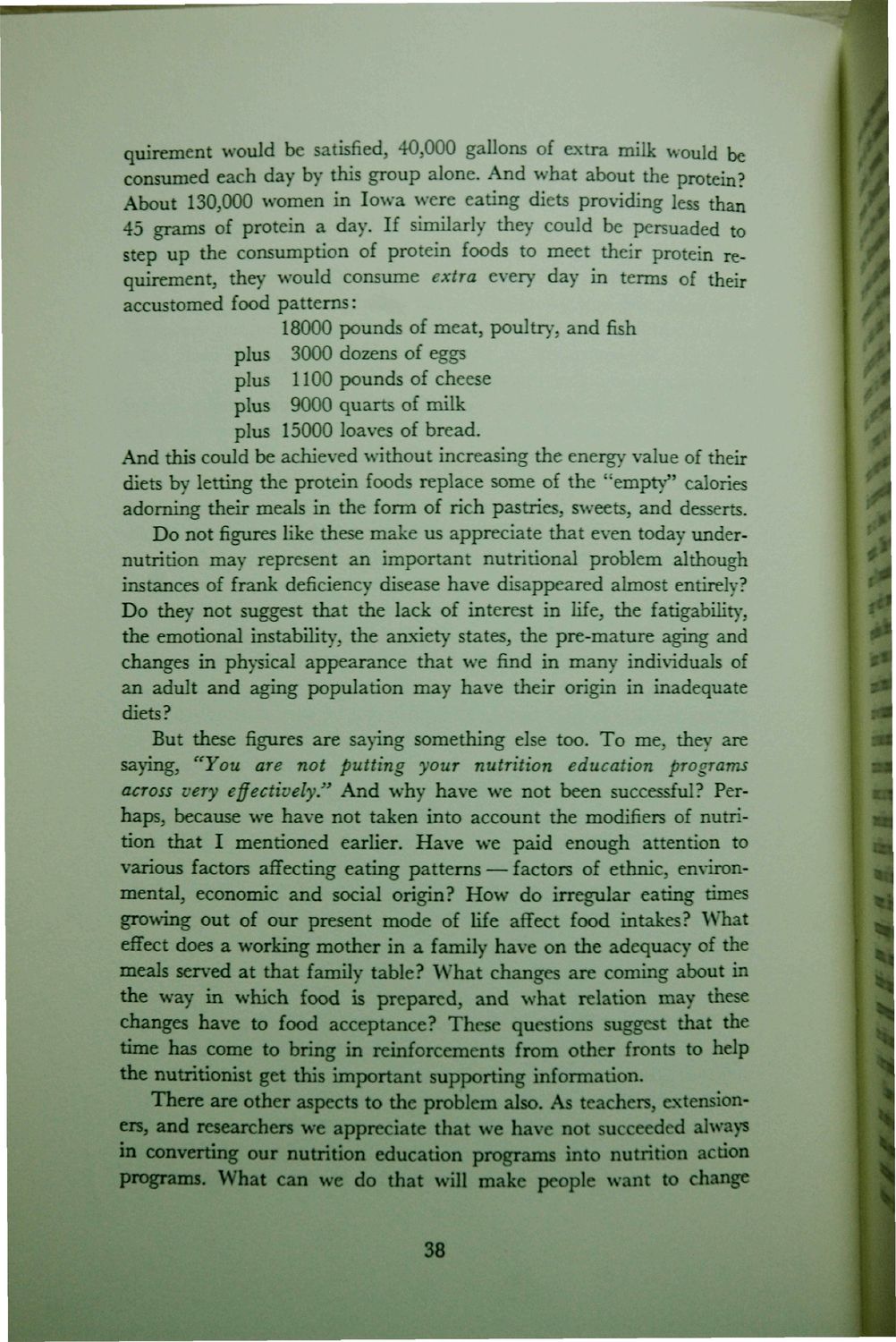| |
| |
Caption: Dedication - Home Economics - Challenge of Home Economics
This is a reduced-resolution page image for fast online browsing.

EXTRACTED TEXT FROM PAGE:
quirement would be satisfied, 40,000 gallons of extra milk would be consumed each day by this group alone. And what about the protein? About 130,000 women in Iowa were eating diets providing less than 45 grains of protein a day. If similarly they could be persuaded to step up the consumption of protein foods to meet their protein requirement, they would consume extra every day in terms of their accustomed food patterns: 18000 pounds of meat, poultry, and fish phis 3000 dozens of eggs plus 1100 pounds of cheese plus 9000 quarts of milk plus 15000 loaves of bread. And this could be achieved without increasing the energy value of their diets by letting the protein foods replace some of the "empty" calories adorning their meals in the form of rich pastries, sweets, and desserts. Do not figures like these make us appreciate that even today undernutrition may represent an important nutritional problem although instances of frank deficiency disease have disappeared almost entirely? Do they not suggest that the lack of interest in life, the fatigability, the emotional instability, the anxiety states, the pre-mature aging and changes in physical appearance that we find in many individuals of an adult and aging population may have their origin in inadequate diets? But these figures are saying something else too. To me, they are saying, €CYou are not putting your nutrition education programs across very effectively." And why have we not been successful? Perhaps, because we have not taken into account the modifiers of nutrition that I mentioned earlier. Have we paid enough attention to various factors affecting eating patterns — factors of ethnic, environmental, economic and social origin? How do irregular eating times growing out of our present mode of life affect food intakes? What effect does a working mother in a family have on the adequacy of the meals served at that family table? What changes are coming about in the way in which food is prepared, and what relation may these changes have to food acceptance? These questions suggest that the time has come to bring in reinforcements from other fronts to help the nutritionist get this important supporting information. There are other aspects to the problem also. As teachers, extensioners, and researchers we appreciate that we have not succeeded always in converting our nutrition education programs into nutrition action programs. What can we do that will make people want to change 38
| |